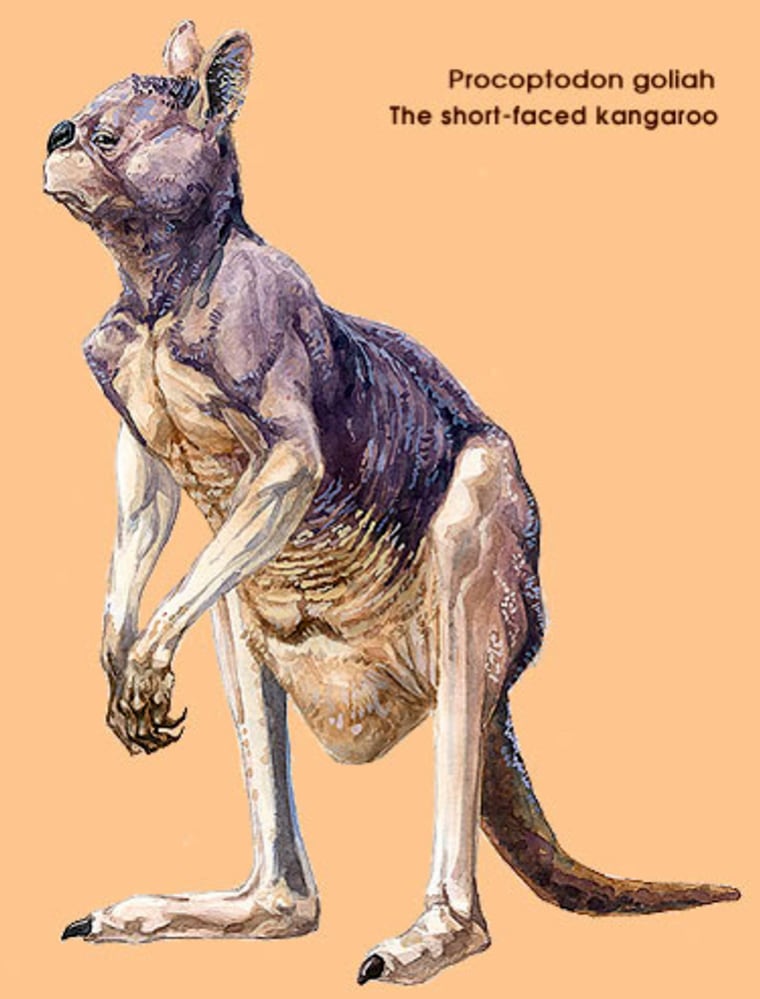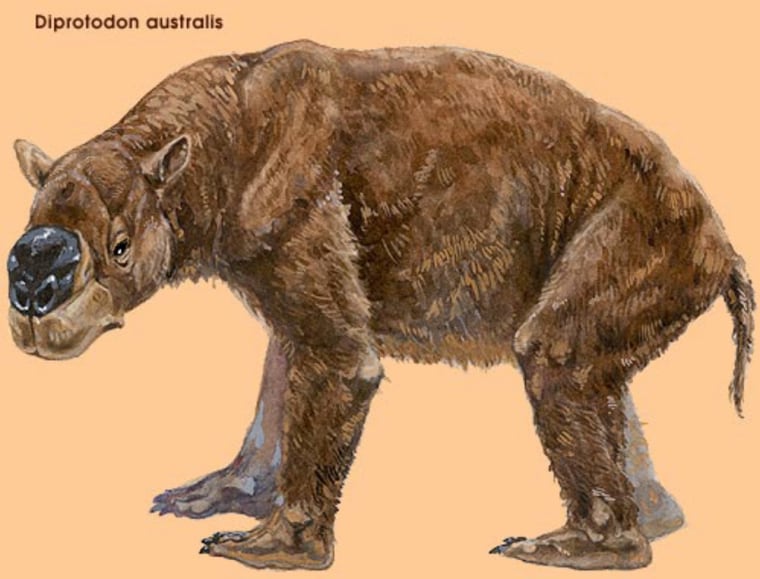Giant prehistoric kangaroos and wombatlike creatures the size of hippopotamuses were not killed off by human hunters but by climate change and starvation, an Australian study has found.
The study, based on the re-excavation of a site at Lake Menindee in western New South Wales state, found strong evidence that the cold climates of the last Ice Age were followed by a drought which caused the mammals to starve to death.
The site was first studied in the 1950s, when scientists argued that hunting implements found there meant that humans had killed off the giant beasts.
"Because scientists at the time couldn't date the items, they assumed they were the same age and extrapolated from that that the humans killed off the giant marsupials," Matt Cupper, a University of Melbourne scientist who led the expedition, said in a statement.
Cupper's team used state-of-the-art radiocarbon and luminescence dating techniques unavailable to earlier scientists to conclude that humans came to the area much later.

Cupper told Reuters the technology meant that items could be dated back as far as 60,000 years ago, twice the period available to the 1950s team.
"People were not even at the scene of the crime, with the oldest evidence of humans at the site at least 10,000 years after the giant mammals went extinct" archaeologist Jacqui Duncan said. "The animals probably died of starvation during drought around 55,000 years ago."
The team plans to study other archaeological sites to discover when and why the giant mammals became extinct across greater Australia.
The largest marsupials to roam the Australian outback were heavier than four-wheel-drive cars, weighing up to 2.5 tons.
